Chabówka 2022-01-03
The Chabówka - Nowy Sącz railway route. Line No. 104.
Mountain railroads are very charming and liked by tourists. Railway tracks arranged on the slopes of the hills with numerous bridges, viaducts, and often with tunnels, provide positive impressions for the observers. There are numerous ascents and descents on the trails, as well as very tight bends, which make the journey along such a line last a long time. A running train resembles a snake that winds among the rocks. There are many such mountain trails in Poland. They occur both in the Sudetes and the Carpathians. One of such lines is the Chabówka - Nowy Sącz trail, which is currently (2022) No. 104.
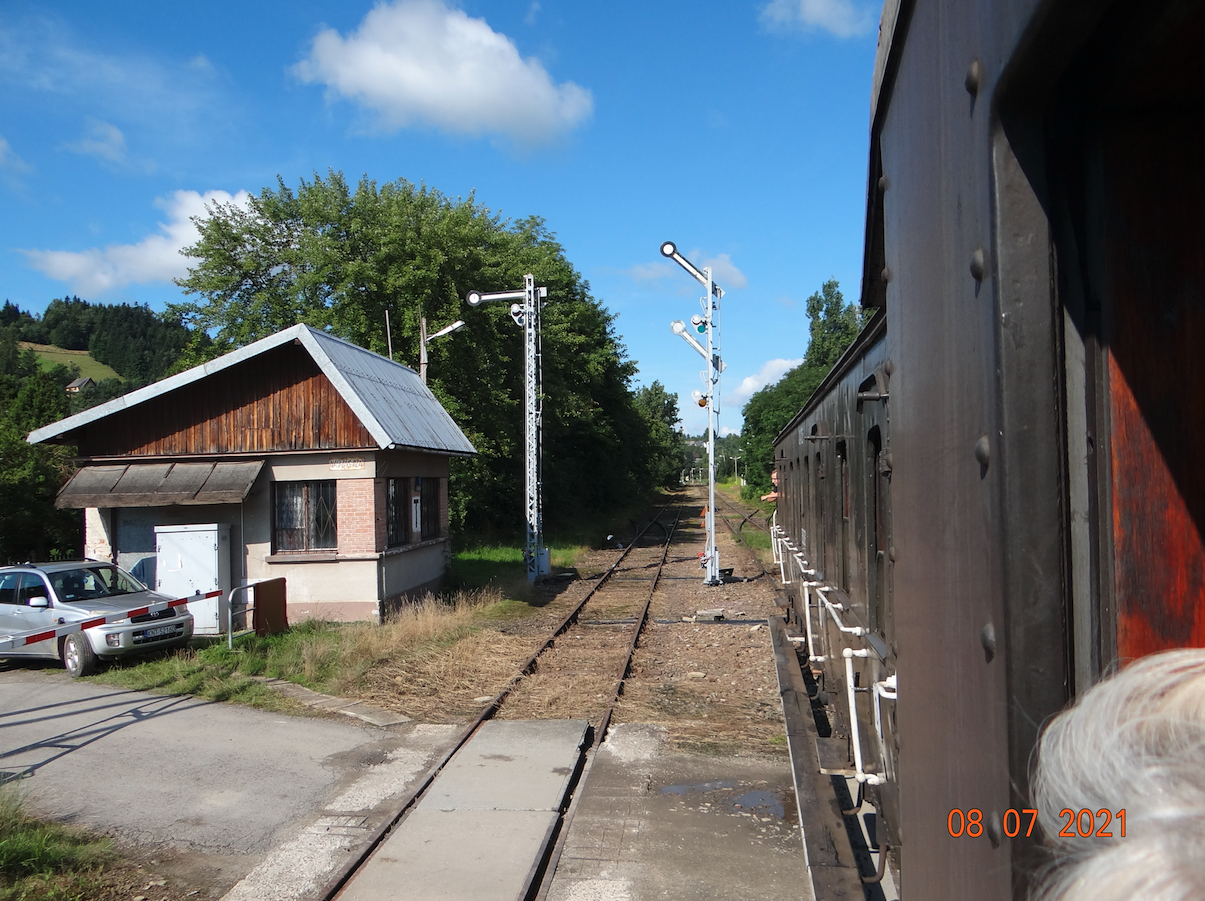
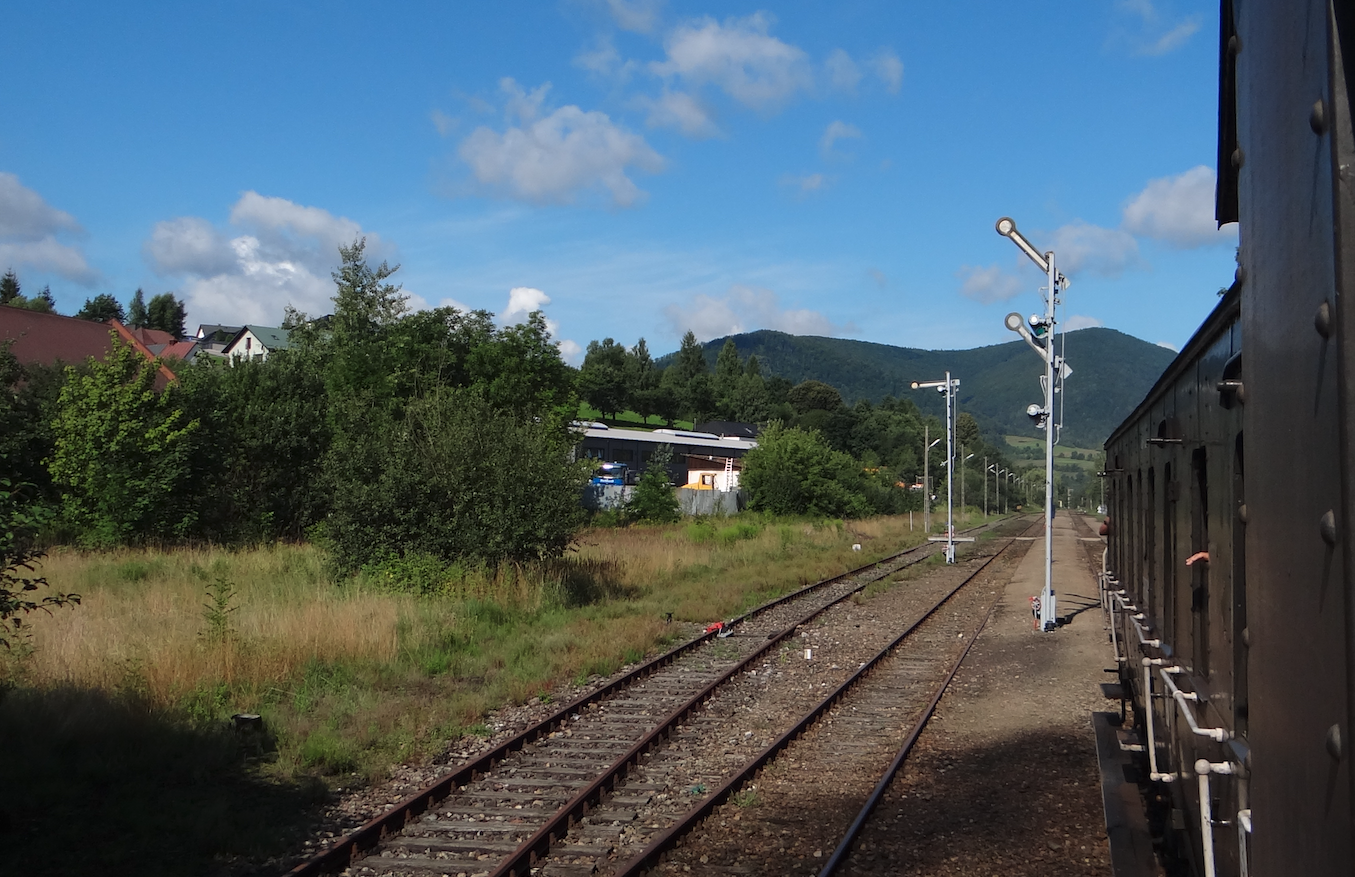



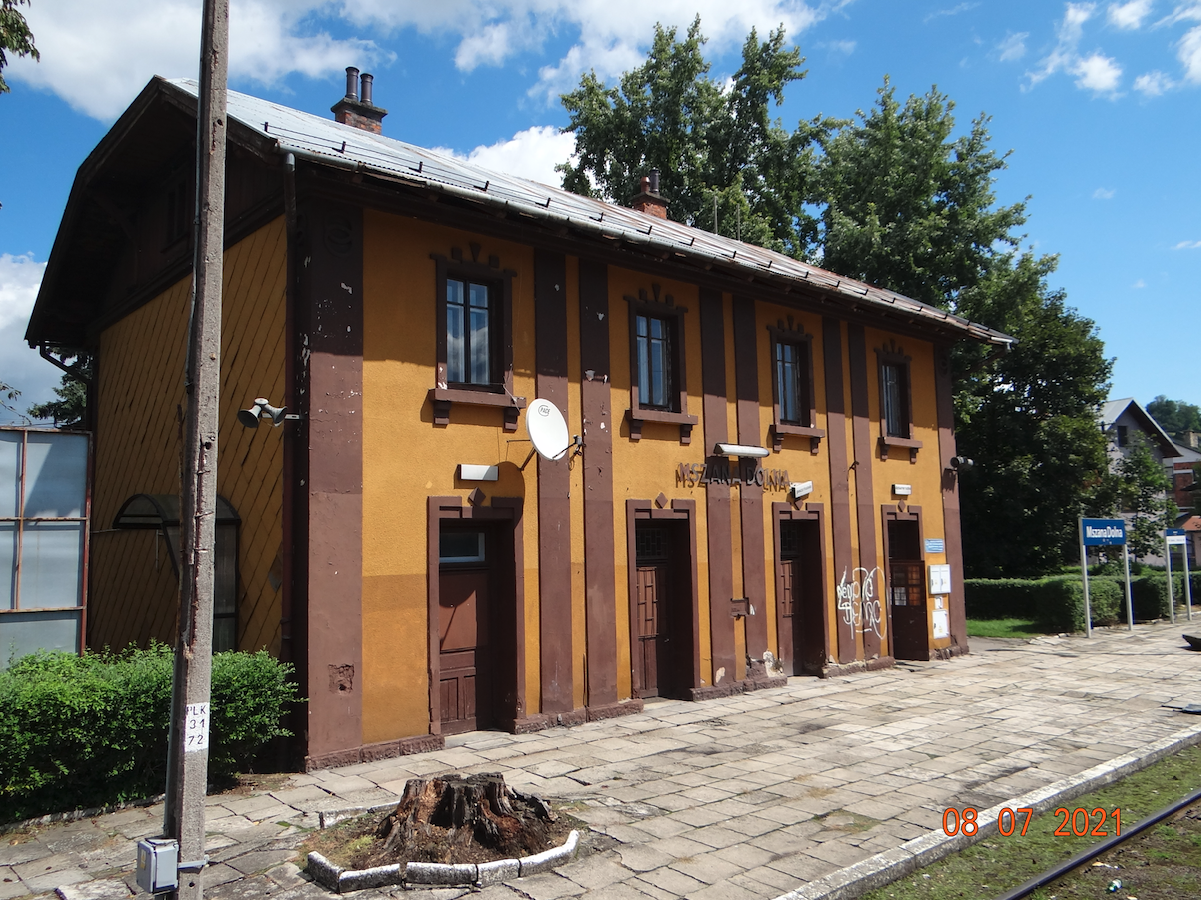
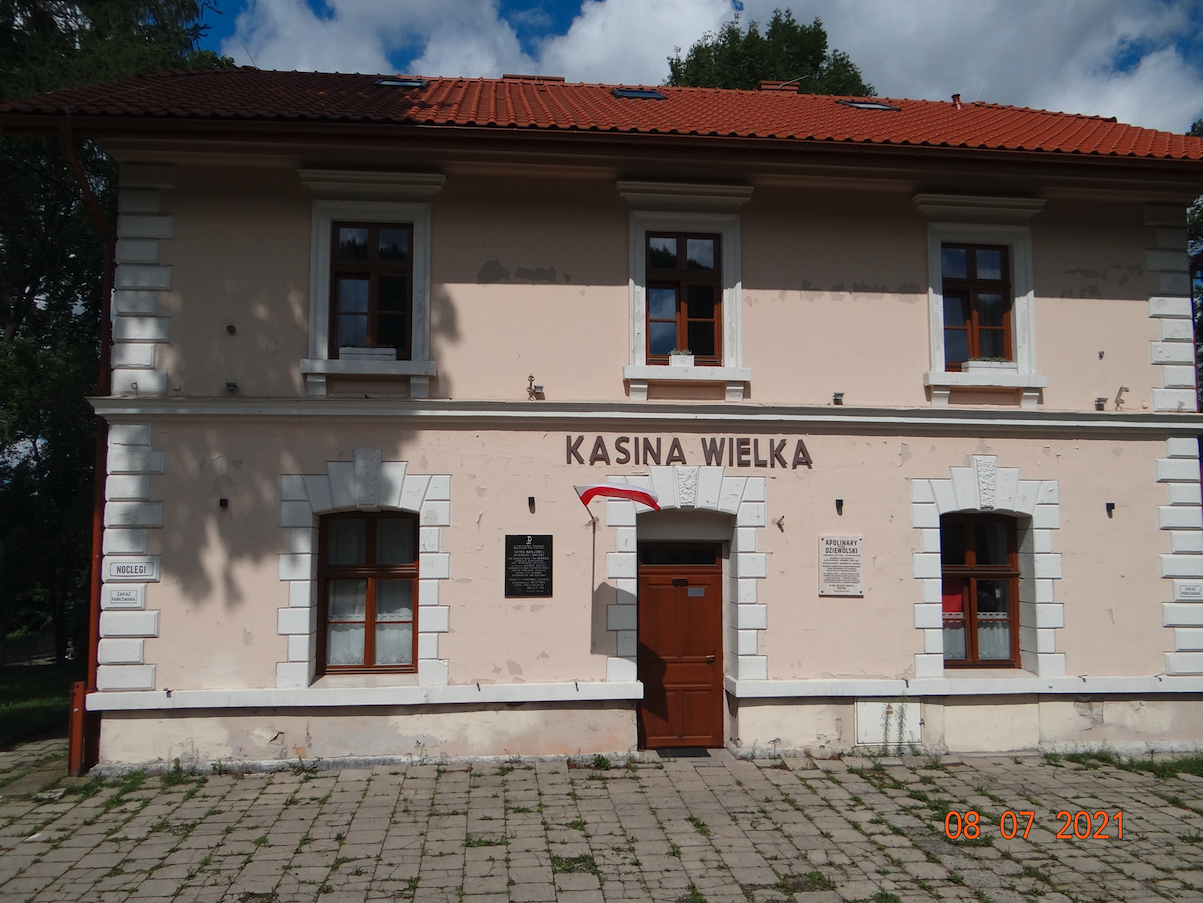
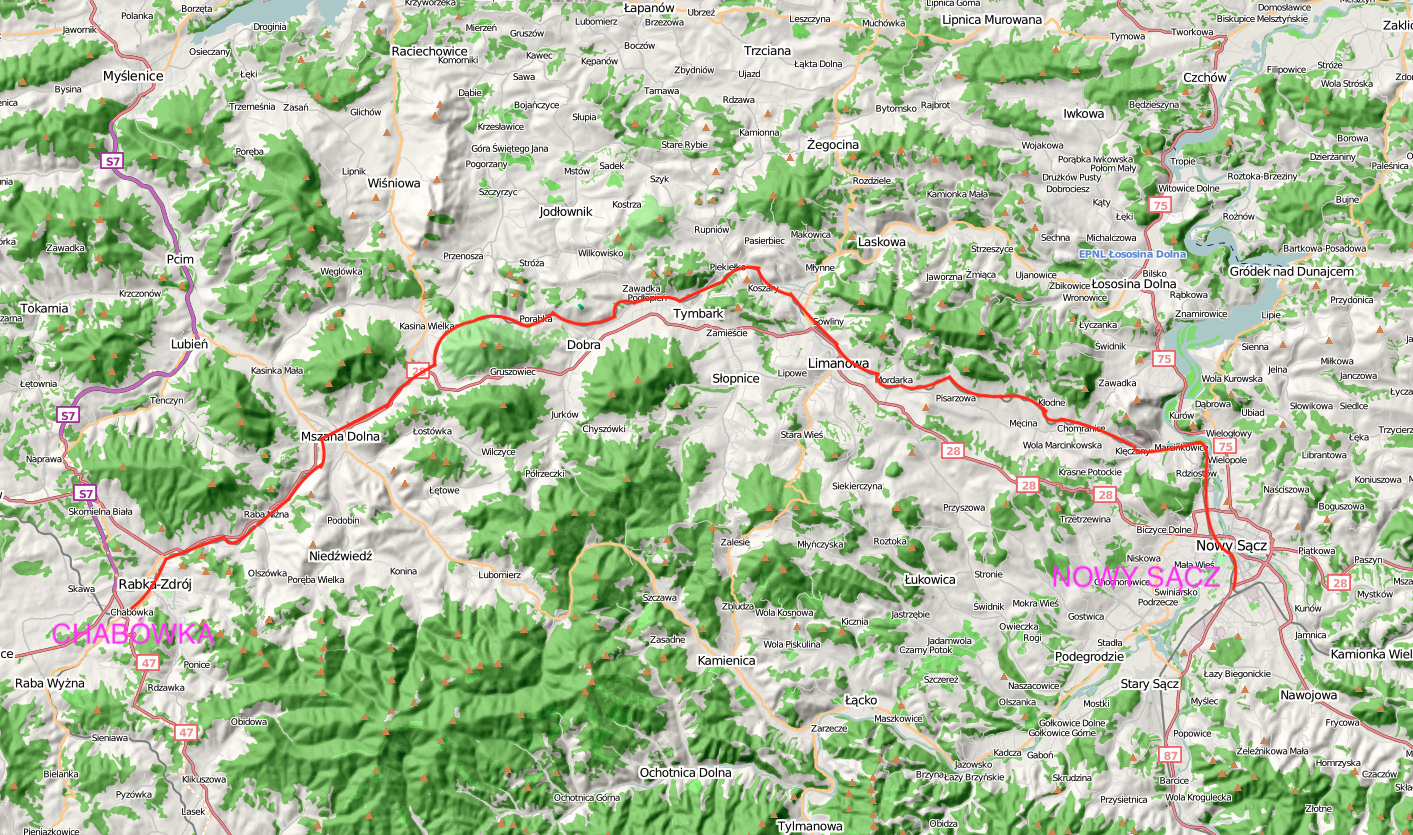
The history of the Chabówka - Nowy Sącz trail.
The line was opened in 1884, i.e. during the partitions of the Polish state, as part of the Austrian state Galician Transversal Railway, leading from Čadca (a county town in northern Slovakia) to Husiatyn (a town in Ukraine near Tarnopol). At the time of putting into operation, the entire line was located in Austria-Hungary. The trail was built mainly for military purposes. The main railway route from Vienna through Kraków, Tarnów, Rzeszów, Przemyśl to Lviv ran too close to the border with Russia. Strictly writing the Kingdom of Poland, which was ruled by Russia.
The Galician Transversal Railway was created as a result of joining several existing railway sections and was also to serve the economic revival of the Beskids. During the Great World War, the railway passed its test and, despite its low capacity, successfully supported the Austrian military operations in the Gorlice operation, and then in the fights near Przemyśl.
After the Second World War, the Chabówka - Nowy Sącz trail was No. 141, then No. 136, and now No. 104. The length of the trail is 76.65 km.
The electrification of the railways in Małopolska in the Krakow Directorate began in 1959. In 1975, the electrification of the Krakow - Zakopane route was completed. There were also plans to electrify the Chabówka - Nowy Sącz line. It ended with electrification on the section Chabówka - Rabka Zdrój (1993, approximately 1.50 km) and Nowy Sącz - Marcinkowice (approximately 9.50 km). The effect was that the locomotive depot in Chabówka, where steam and diesel locomotives were serviced, could not be closed. The second effect was dragging passenger trains with electric traction on steam and diesel locomotives on the Chabówka - Nowy Sącz section. These were passenger trains from Zakopane to Tarnów and further to Rzeszów and Lublin.
During electrification on the trail, some of the shaped traffic lights were replaced with traffic lights. However, the investment in the replacement of signaling devices has not been fully implemented.
In 2004, regular passenger traffic on the route was suspended. Freight traffic was sporadic. In 2005, PKP PLK informed that the route needed renovation. The general renovation was not carried out, only the ad hoc renovation was carried out, in order to keep the route passable at a speed of only 30 km / h.
Currently (2022), the trail is very popular for Retro trains and occasional trains that run through the Chabówka open-air museum, especially during the holiday season. In 2021, the last special train traveled on November 11, 2021, on the occasion of the anniversary of Poland regaining independence.
Route electrification plans.
In the 1970s, it was planned to electrify all railway routes in Poland. However, it did not come to that. The Chabówka - Nowy Sącz trail was planned to be electrified by 1988. On May 28, 1986, the section Nowy Sącz - Marcinkowice, 9.50 km long, was electrified. On May 21, 1993, the 1.50 km long section of Chabówka - Rabka Zdrój was electrified.
Description of the route Chabówka - Nowy Sącz.
Trail No. 104 is of national importance and is a single-track one. The entire length of the line runs through the Beskid Wyspowy. The slopes of slopes and driveways reach the value of 27 per mille. 19 larger bridges and viaducts are used to overcome obstacles, the longest of which is 300 m long and crosses the Dunajec River in Nowy Sącz. In general, the route runs along the national road No. 28. Most rail-road crossings are on one level, and many of them are equipped with automatic traffic lights informing drivers that a train is approaching. Telephone poles are erected along the tracks. On the section to Rabka Zdrój, the speed is up to 50 km / h, and on most of the route - only 30 km / h.
The trail starts in Chabówka and runs through Rabka Zdrój, where there is a passenger stop (1.93 km). The line initially runs along the Raba River crossing it several times.
Then, on the 5.59 km of the route is the Rabka Zaryte railway station. The station has a stepped (terraced) track system. Entry traffic lights are luminous and exit traffic lights are shaped.
The Raba Niżna passenger stop is located at 8.50 km of the trail. A wooden construction station building from 1948 has survived and is not used.
At 13.38 km there is a closed passenger stop Mszana Dolna Marki. There is only the platform edge here.
At km 14.95 there is the Mszana Dolna station, which is relatively large. It has four tracks and one platform. There are shaped and light semaphores at the station. A typical Galician railway station, two-storey. The station once had a locomotive (until 1917), a turntable (until 1930) and a water tower blown up on January 13, 1945. There were numerous warehouses and storage yards around the station. Right after the Mszana Dolna station, the viaduct crosses the voivodeship road No. 968 and the Mszanka River over the bridge. A few hundred meters further there is the viaduct over DK No. 28 (Piłsudskiego Street). In Mszana Dolna, the trail leaves the Raba River.
The Fornale railway stop is located at 19.00 km of the route. Then the trail crosses the provincial road No. 964 on one level.
At 23.39 km there is the Kasina Wielka railway station. The station has three tracks, a station building, outbuildings and control rooms. The building of the station is typical of railroads in Galicia, two-storey, brick. Currently, it houses a small hotel called "Stacja Kasina". The station was used as the scenery for many feature films. It is the highest active railway station in Poland. Nearby is the highest peak on the Śnieżnica route, 1007 m above sea level. There is also a chairlift here.
The Skrzydlna passenger stop is at 25.95 km. There is a small brick station building from around 1965 at the stop. The stop is located on the slope of Śnieżnica. In good weather, you can see the chimneys of factories in Krakow from here.
The Dobra station near Limanowa is located at 30.84 km. There are three tracks at the station, including one at the loading dock. A typical two-storey building of the station. There are two control boxes at the station. The station was used in several feature films as scenery. There is a unique railway viaduct in Dobra 200 meters from the station. Two kilometers away there is another viaduct over the gorge with a small stream. The trail continues along the Łososina River.
The Tymbark railway station, which has three tracks, is located at 37.16 km. The train station building in Tymbark is a wooden building. After Tymbark, the trail crosses the Łososina River with a beautiful truss bridge.
The Piekiełko passenger stop is located at 40.07 km. At the stop there is a brick railway station building in the highlander style covered with shingles.
The Limanowa station is located at 47.01 km. The station building was built around 1965 in the style of socialist realism. The building is a two-story building with a single-pitched roof. At 49.00 km, near the town of Mordarka, there is a historic railway bridge from 1884. Before the village of Limanowa, the trail leaves the Łososina river bed.
The Pisarzowa train station is at km 52.45. Currently there is only one track on it, but there used to be four tracks. At the station, there is a typical, two-story, brick-style station building in the Galician style. In the further part of the trail there is a historic lineman's building from the 19th century. The building is made of brick with a gable roof. It is now a residential house.
The Męcina Podgórze passenger stop is at 56.37 km. At the stop, there is a small brick station building, built around 1965. The building resembles a village shop.
The Męcina station is at km 59.48. There is one track at the station, there used to be three tracks, a ramp, and a loading yard. Currently, there is only a typical Galician, two-story station building.
The Chomranice passenger stop is at km 61.97. There is a station building here, which resembles a single-family house from the 1980s. There is a historic debtor's booth in Chomranice, which is a residential house.
The Klęczany railway station is located at km 64.38. The station is large and has five tracks. There was a footbridge over the tracks, which was pulled down in 2008 due to degradation. The station is terraced, and its main task is to load crushed stone into the local quarry. At the station, there is a building for loading aggregate through a system of conveyor belts. The KSS Klęczany mine is a producer of crushed aggregates such as a wedge, crushed stone or broken flat stone. Before the village of Klęczany, the trail runs along the riverbed of the Smolnik river, which flows into the Dunajec, which becomes a railway track.
At km 67.39, there is the Marcinkowice station. The station has five tracks and one island platform. There is a shelter for travelers on the platform. At the station, there is a typical Galician station building, two-story, with a multi-plane roof. There are two control station buildings, but only one is used from the side of Męcin. There are light signals at the station (entry, exit, maneuvering). There was a small engine depot here. There is a railway weighbridge at the station. There is a plant at the station that regenerates railway wheel sets for the NEWAG factory in Nowy Sącz. The route is electrified from the Marcinkowice station to Nowy Sącz.
The Nowy Sącz Chełmiec passenger stop is at 72.90 km.
At 74.39 there is the Nowy Sącz Miasto train stop with a Galician station building and a single-edge platform next to the building. The platform is covered and, despite having a single track, it resembles a rich railway station from the 19th century.
The Nowy Sącz terminus is located at 76.65 km.
Plans for the expansion of the railway network.
The plans for the expansion of the railway network in Małopolska are very extensive. It is planned to build a completely new railway line No. 622, which will connect Podłęże - Piekiełko. The idea of building a new line is to shorten the travel times of trains on the route Tarnów - Zakopane, Kraków - Krynica Zdrój and others. The route from Kraków to Zakopane will be 20 km shorter, and from Kraków to Krynica by 60 km. The analyzes show that the travel time from Krakow to Zakopane will be shortened to 1 hour and 30 minutes.
The project is commonly known as "Podłęże - Piekiełko" and involves the construction of 58 km of a new railway line, which will start in the Podłęże village in the Niepołomice commune (Podłęże R401 branch post) and head south. In Szczyrzyc the line will branch and run east to Tymbark (line No. 622) and west to Mszana Dolna (line No. 623). In these places, the new line will connect with the existing 76 km line Chabówka - Nowy Sącz (line No. 104), which will be modernized.
The scope of works is very large, because it requires not only the construction of a new electrified line, 58 km long, but also a general renovation of the Chabówka - Nowy Sącz route, including electrification. As part of the investment, 58.47 km of electrified tracks will be built, 8 flyovers with a total length of 7.79 km, 11 tunnels with a total length of 11.82 km will be built, 20 bridges, 89 culverts, 17 railway viaducts, 14 car viaducts, 11 crossings rail-road. Four traction substations (Przymłynie, Mszana Dolna, Pisarzowa and Limanowa) will be installed on the new route. The estimated cost of the investment is PLN 180 million (stage I, 2016). In 2017, the technical documentation for the investment was prepared: Podłęże - Szczyrzyc - Tymbark - Mszana Dolna. In 2019, the main contractor was selected. The route was planned to be closed during construction in November 2021. The works were planned to be completed in 2026, but investment will be delayed due to the "corona virus" epidemic. We wish investors, contractors and ourselves that the investment will be realized.
Let us also mention that the first attempts to build a new Krakow - Zakopane railway route were planned at a time when Zakopane was applying for the organization of the 2006 Winter Olympics.
Written by Karol Placha Hetman
